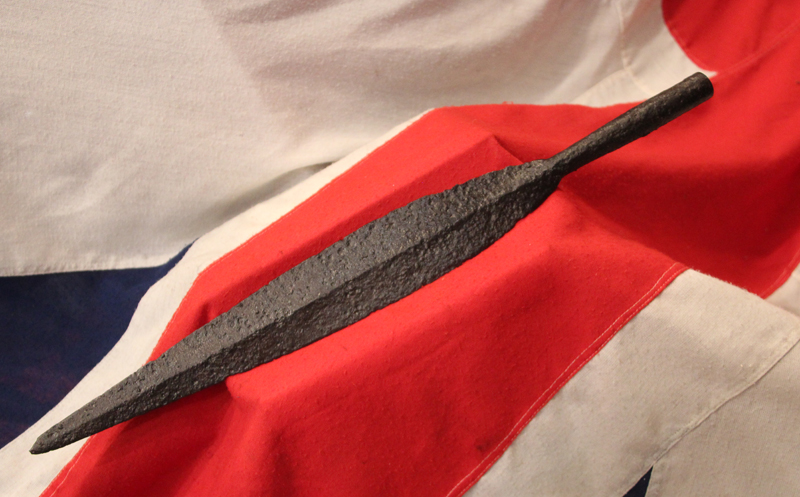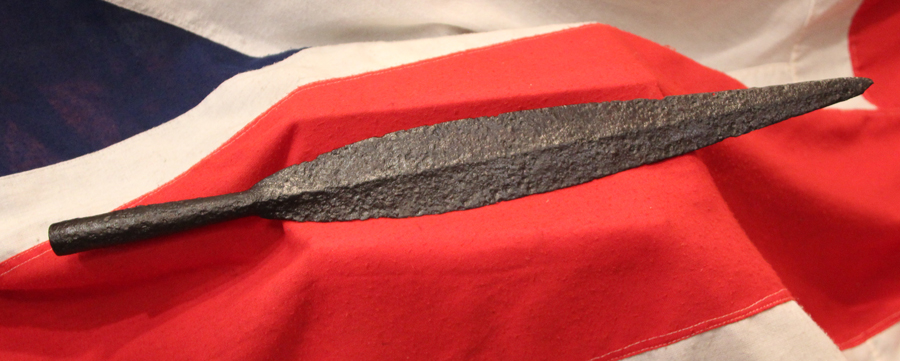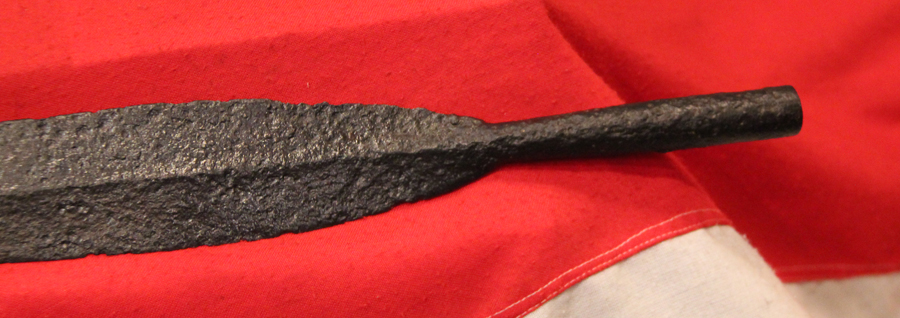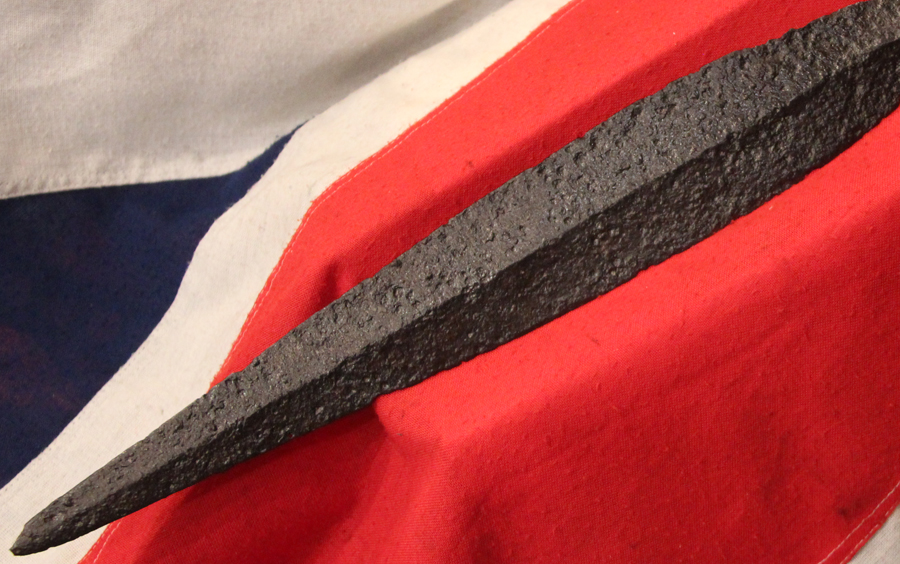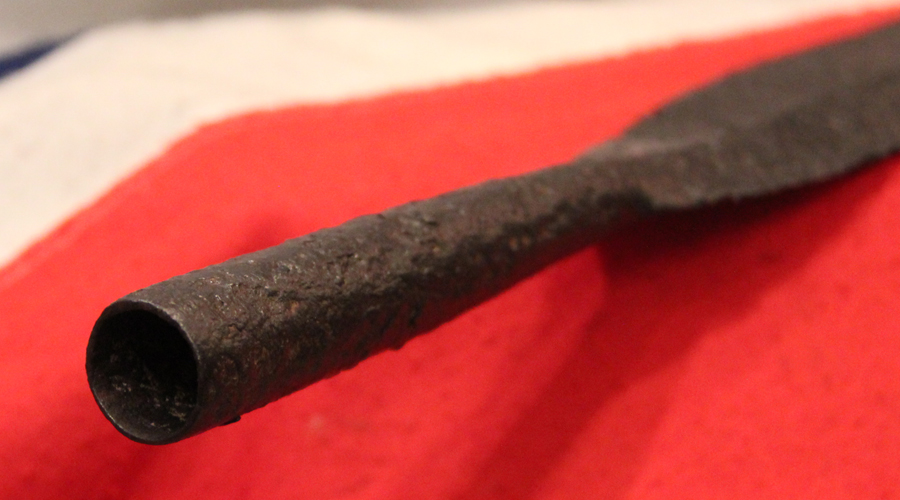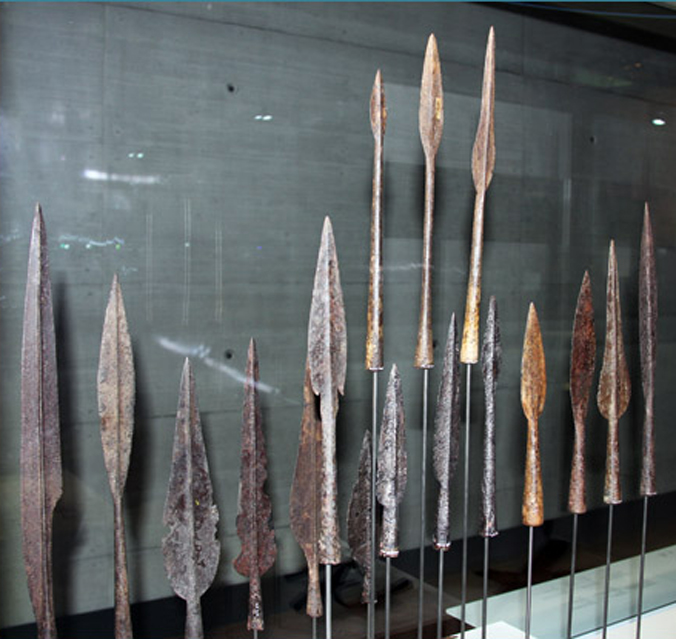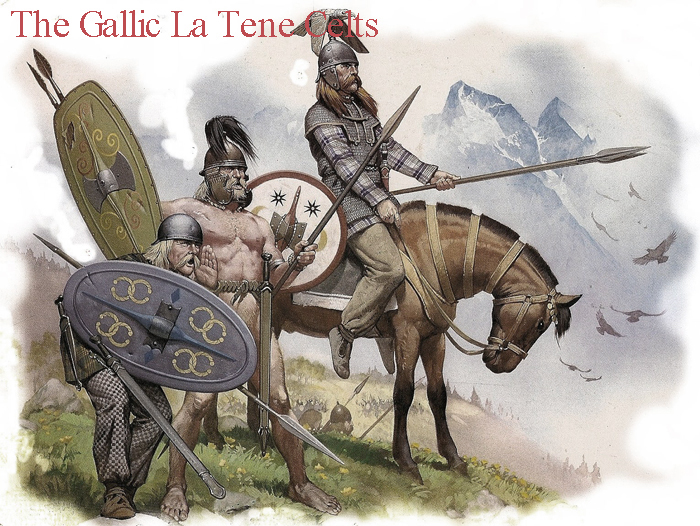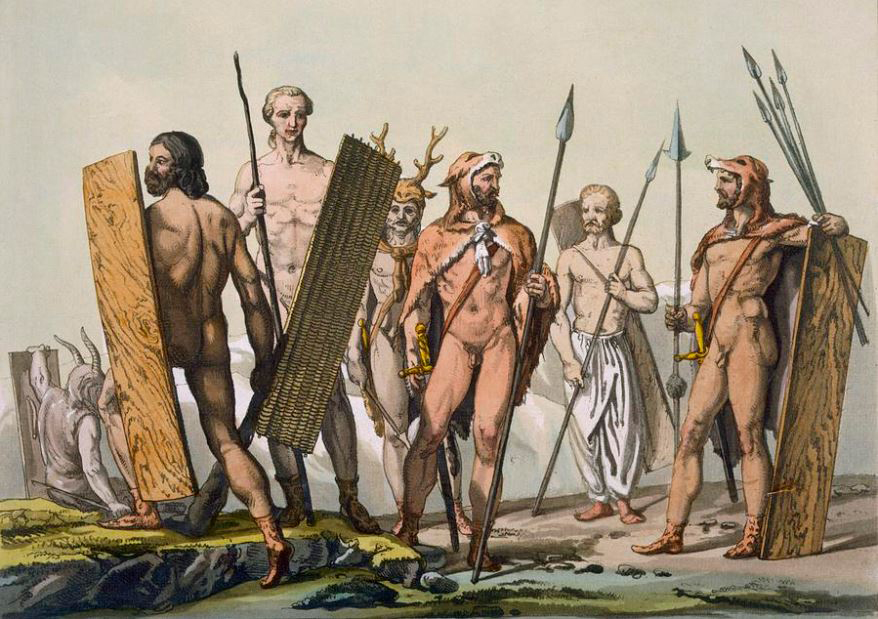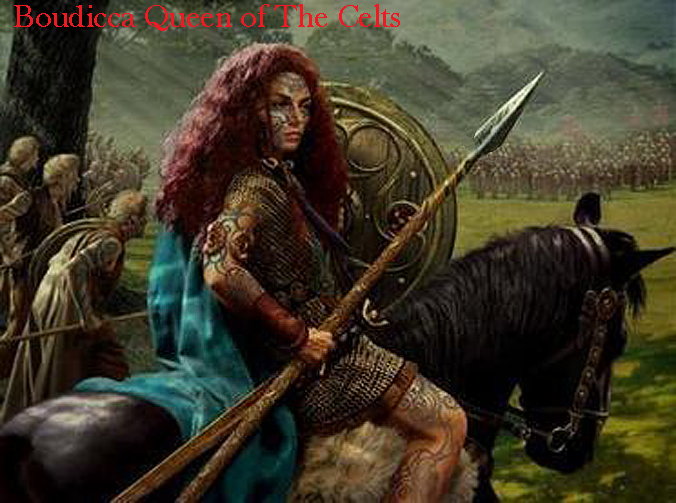A Fine Roman Period Original Ancient Celtic Spear Early 1st Millenium B.C. Used by Celt’s of the Ancient British Iceni and Queen Boudicca. Scourge of The Roman Occupation of Britain
From the earliest era of the Roman 'La Tene' Celts, the enemies of both the Republic of Rome and the Roman Empire. A massive hand-forged iron spearhead, leaf-shaped with slight median rib, short neck, 5 inch socket. A most beautiful and interesting spear of the Celts. The La Tene culture developed and flourished during the late Iron Age (from 450 BC to the Roman conquest in the 1st century BC) in eastern France, Switzerland, Austria, southwest Germany, the Czech Republic, and Hungary. The Celts further reigned in Ancient Britain, with Boudicca their most famous Queen, who perished fighting the Roman forced occupation of Britanniae all under the umbrella control in of the Ancient Druids, the so called suspected controllers of the ancient British monument-religious site, Stonehenge much debate still occurs over this. Boudicca is one of Britain’s greatest heroines who was a freedom fighter who rebelled against the Roman government. She was Queen to the Celts and truly was one of history’s most fiercest and passionate warrior queens. However, before she became Queen, Boudicca was a simple girl of royal descent who was estimated by historians to be born in 25-30 AD in Colchester, South East England. Details concerning Boudicca?s upbringing are severely limited as the only primary evidence that exists is by two Roman historians by the names of Tactitus and Dio Cassius. Boudicca, eventually armed with her 100,000 men army first attacked Camolodunum (Colchester) where the Romans had their main centre of rule. Archaeological evidence done by historians reveals that the city of Camulodunum was burnt to the ground in a methodical way which reveals to present historians that Boudicca was an intelligible and calculated warrior and leader who planned her attacks and succeeded in such a way that often there were no survivors. "I was whipped by the Romans when they tried to take our lands and now I am fighting for my freedom. Think how many of us are fighting and why. We must win this battle or die. Let the men live as slaves if they want. I will not."
Boudicca’s last speech, as recorded by Dio Cassius. After the defeat of Boudicca’s army by Rome there are many theories about what happened next. Many historians including Tactius have theorised that after the defeat of the rebel army Boudicca fled back to her tribe with her two daughters and drank hemlock (a poisonous plant) with them to evade capture from the Roman Empire. However there are also other theories by Dio which speculate that Boudicca, the great Iceni Celtic queen died of illness. Though the exact cause of her death may be disputed she was given a lavish burial fitting of a revered heroine. Celts had a large reputation as head hunters, and were famous for putting victim?s heads on their chariots, and in front of their homes. Many Celts fought completely naked (much to the surprise of their enemies) and are famous for their iron long sword: ?They cut off the heads of enemies slain in battle and attach them to the necks of their horses. The blood-stained spoils they hand over to their attendants and striking up a paean and singing a song of victory; and they nail up these first fruits upon their houses, just as do those who lay low wild animals in certain kinds of hunting. They embalm in cedar oil the heads of the most distinguished enemies, and preserve them carefully in a chest, and display them with pride to strangers, saying that for this head one of their ancestors, or his father, or the man himself, refused the offer of a large sum of money. They say that some of them boast that they refused the weight of the head in gold
By the 2nd century BC, Celtic France was called Gaul by the Romans, and its people were called Gauls. The people to the north (in what is present-day Belgium) were called Belgae (scholars believe this may represent a mixture of Celtic and Germanic elements) and the peoples of the south-west of France were called the Aquitani by the Romans, and may have been Celtiberians or Vascons. The Celts of Britain included the Iceni. As with all our items it comes complete with our certificate of authenticity. See Cf. Stead, I. et al. Iron Age and Roman Burials in Champagne, Oxford, 2006, fig.56 (21.5"). 500 grams, 54.5cm. A photo in the La Tene gallery in the Latanium Archelogical Museum in Neuchatel. Overall russetted condition and very sound, with bend at the tip area. Almost every iron weapon that has survived today from this era is now in a fully russetted condition, as is this one, because only the swords of kings, that have been preserved in national or Royal collections are today still in a good state and condition.
Code: 22074

